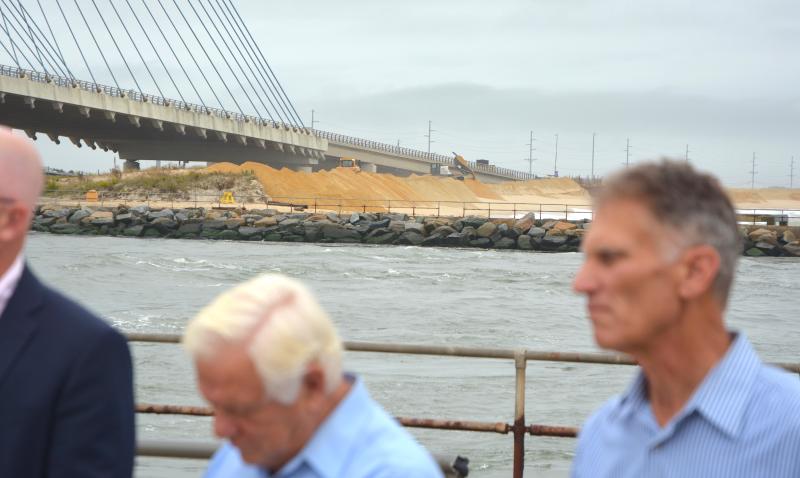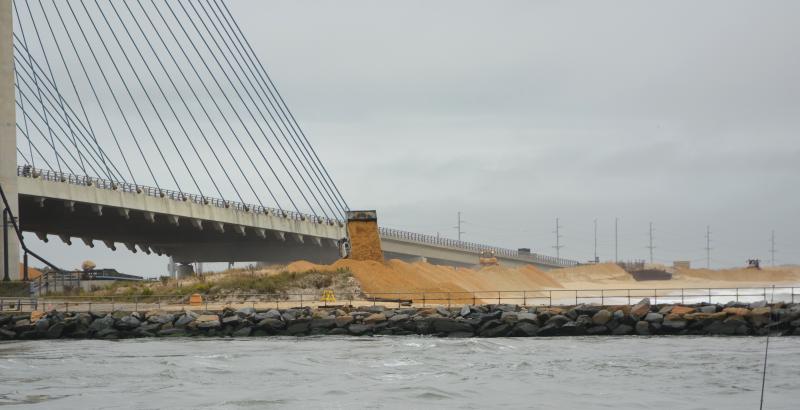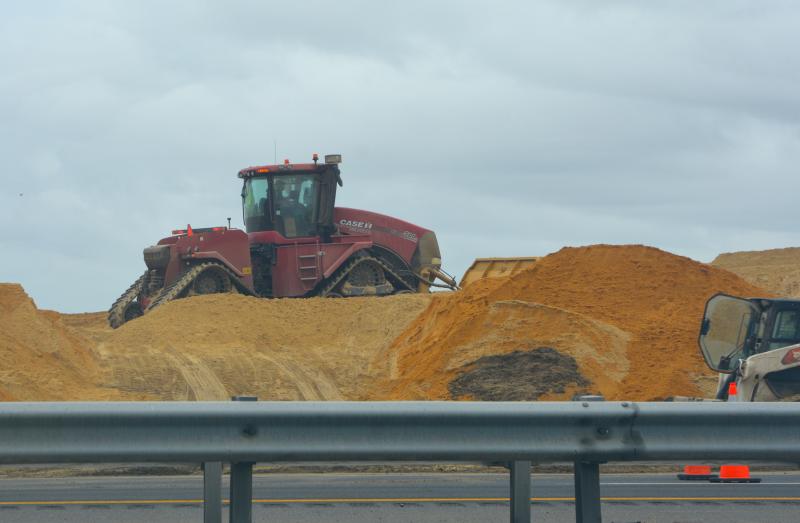Army Corps’ top engineers working on inlet beach issue
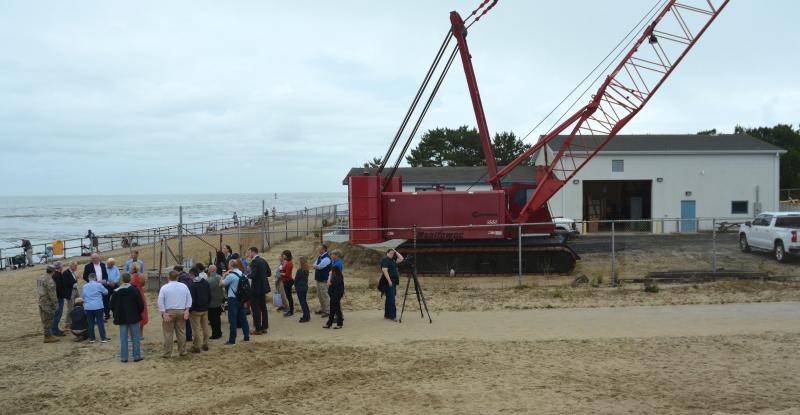
If everything goes as planned, in the name of protecting critical infrastructure, the north beach at the Indian River Inlet will be fortified with up to 800,000 cubic yards of sand over the course of the next two winters.
Federal and state officials gathered in the parking lot on the south side of the inlet Sept. 27 to show the bipartisan support behind the major project.
The dune along the north side of the inlet has been breached twice since March, most recently in August. Following that breach, the state – $15 million – and federal government – $10 million – announced $25 million has been secured to pump up to 800,000 cubic yards of sand along a mile-long stretch of the beach north of the inlet.
Sen. Tom Carper secured the federal monies. He said the project will protect critical infrastructure. Delaware can’t afford to lose the bridge, as tourism and agriculture are both helped by the bridge, he said.
Lt. Col. Jeffrey Beeman, U.S. Army Corps of Engineers Philadelphia District commander, said the Army Corps has three roles to play in the implementation of the project – expediting the regulatory process, phase two of the dredging and long-term solutions.
This inlet is the most complicated in the country, Beeman said, and the Army Corps of Engineers has its best engineers on it.
Delaware Department of Natural Resources and Environmental Control Secretary Shawn Garvin said the agency had plans in place for the same project to take place in 2025. It was all going to plan until March of this year, he said.
It’s hard to keep up with Mother Nature, said Garvin.
Sen. Gerald Hocker, R-Ocean View, has been critical of the state and its inaction on the beach. He said he can remember when the beach was 300 feet wide. Every cubic yard of sand helps, he said.
Sen. Russ Huxtable, D-Lewes, and Rep. Ron Gray, R-Selbyville, were also on hand.
In addition to the replenishment project, a sand pumping system that’s supposed to pump sand from south of the inlet to north of the inlet should be running by December. It hasn’t worked in years.
Garvin said even when the bypass system is working, there will still be issues. Some years, he said, there’s just not sand to pump on the south side.
Sand isn’t the only tool being used to strengthen the bridge and the nearby roadway. There will be more than two football fields worth of sheet pilings installed along northbound Route 1 to protect the bridge’s off ramp and road structure.
The Delaware Department of Transportation will oversee the installation of the sheet piles, but representatives from the agency were not at the gathering.
C.R. McLeod, DelDOT spokesperson, said bidding on the 650 feet of sheet piling closed at the end of the day Sept. 27, with more information on cost and specific timeline coming once the project is awarded. The goal is to have the work begin before the end of the year, he said.
“Once in place, the sheet piling should provide several decades of use before deterioration becomes an issue,” said McLeod.
Installing the sheet piles is expected to take about a month to complete, said McLeod. There will be an extended right-lane closure of Route 1 northbound across the bridge and along the area where the work is being performed, which will be communicated when DelDOT knows the schedule and work is closer to beginning, he said.
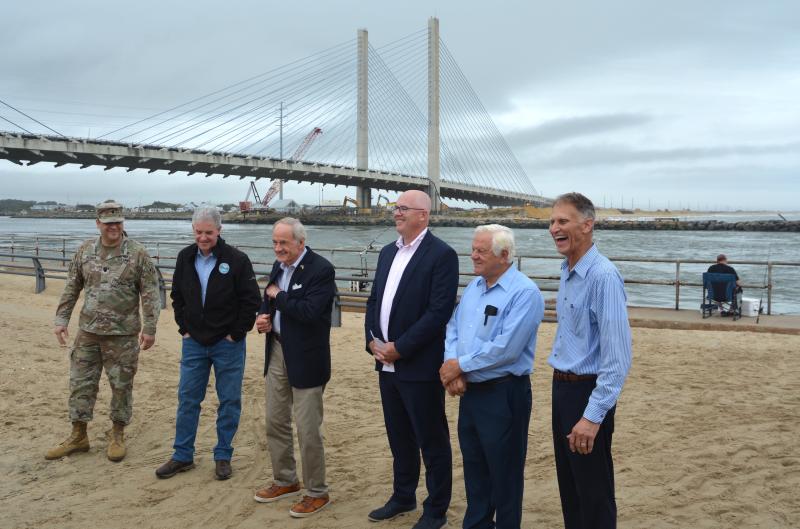
Chris Flood has been working for the Cape Gazette since early 2014. He currently covers Rehoboth Beach and Henlopen Acres, but has also covered Dewey Beach and the state government. He covers environmental stories, business stories and random stories on subjects he finds interesting, and he also writes a column called Choppin’ Wood that runs every other week. He’s a graduate of the University of Maine and the Landing School of Boat Building & Design.














